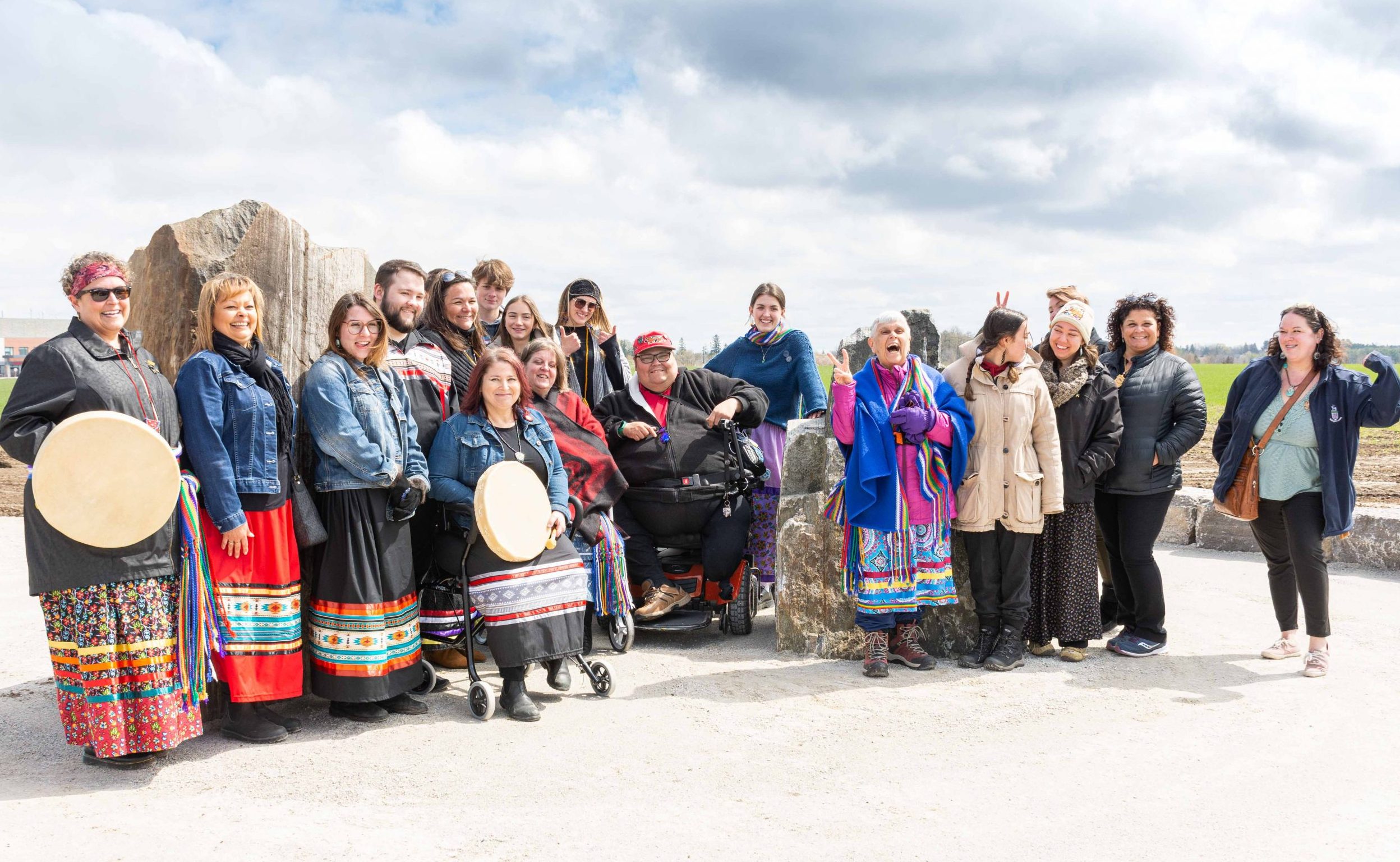ABOYNE – Indigenous people live, work and raise families here, Colleen Brunelle, a Métis woman, told a crowd gathered on Wednesday morning for the official opening of the county’s Indigenous Gathering Circle behind the Wellington County Museum and Archives.
“Wellington County is our home,” she said.
From a podium backed by shrubs and trees, Brunelle, also a county employee and chair of the county’s Indigenous Advisory Committee (IAC), addressed the crowd of municipal employees, local politicians and Indigenous community members.
“What you see here over my shoulder,” she said, “is the county’s response to a small request … the IAC asked for a few tobacco plants to be planted a few years ago.
“Be careful what you wish for,” she said ruefully to laughter.
Although the gathering circle remained in the early stages of development this week, with stone dust pathways boarded by the spring mud, Brunelle encouraged people to picture what’s to come at the two-acre site in the months ahead.
“We wanted to make sure that the roots were respected and our ancestors present moving forward,” she explained of opening the gathering circle prior to planting.
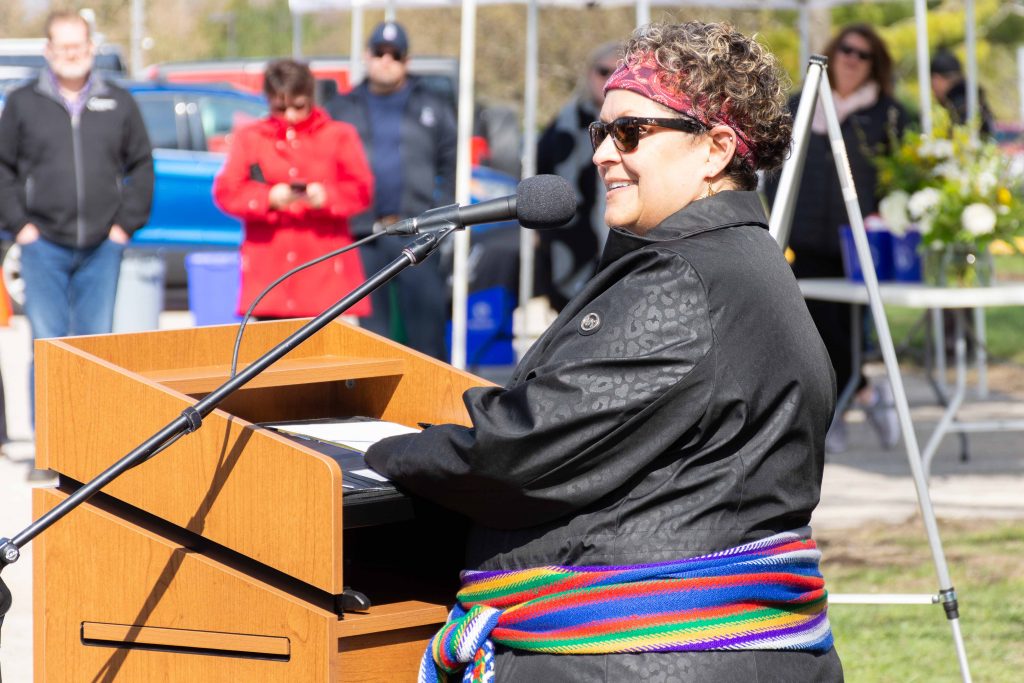
Indigenous Advisory Committee chair Colleen Brunelle speaks at the official opening of an Indigenous Gathering Circle at the Wellington Place Campus on April 26. Brunelle is wearing the Métis Sash for Region 9 (Southwest Ontario) with five colours for each council in the region; blue represents water. Photos by Jordan Snobelen
With pathways revolving around a circle with three, upright granite stones representative of Métis, Inuit and First Nations, the gathering area is intended for teaching, ceremonies, growing sacred medicines — including tobacco, cedar, sage and sweetgrass — and for the community at large to gather on a journey of reconciliation.
Much of Indigenous culture is intentional, and the circles are representative of all voices being equal, Brunelle later explained.
“No head, no foot,” she said.
“Like many Indigenous people who have been displaced from their culture, we too are on different paths and are learning in our connection,” Brunelle told the gathering.
“We acknowledge what we know, but also what we still need to learn.”
Fruit trees, including apple, plum, pear and mulberry varieties, and others such as elm, maple, cedar, elderberry, juniper and linden, will all be planted in the area.
Lending wisdom from a community garden sign, Brunelle said to plant a garden is an act of hope for the future.
“When one plants a garden, you expect to be present later, to tend it, to harvest it, and to come together to accomplish these things,” she remarked.
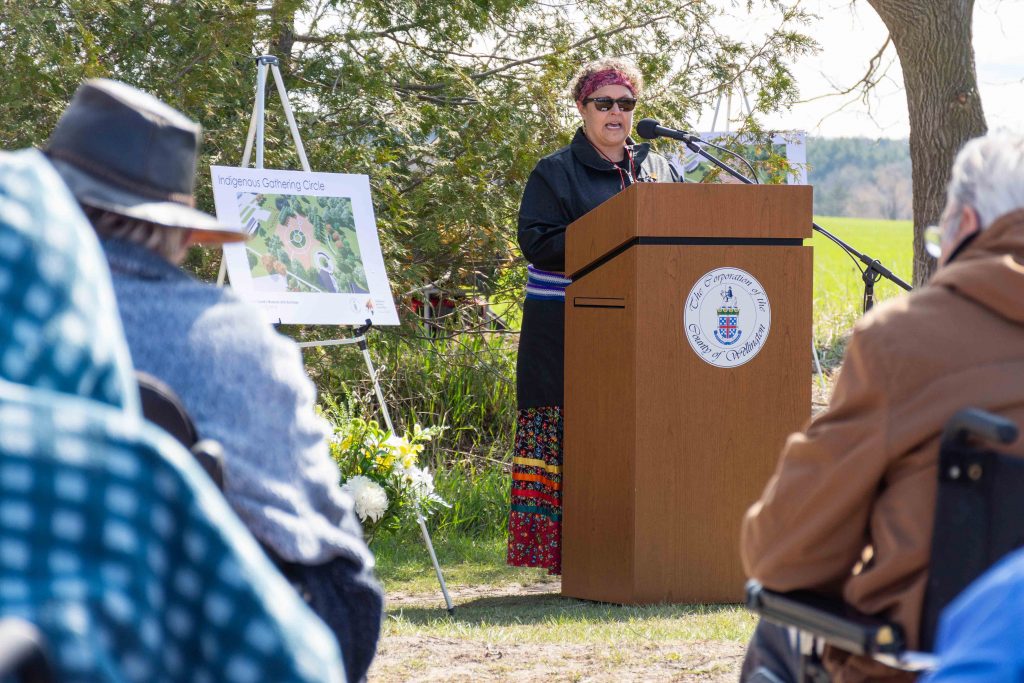
Indigenous Advisory Committee chair Colleen Brunelle speaks at the official opening of an Indigenous Gathering Circle at the Wellington Place Campus on April 26.
Following comments from politicians, including Warden Andy Lennox, county councillor Mary Lloyd and Centre Wellington Mayor Shawn Watters, the group entered the circle’s pathways to observe and participate in ceremony.
IAC member Amber Holmes, who is a two-spirit Anishinaabe medicine keeper, led a small circle of Indigenous youth and adults in song with the steady cadence of beating drums and the shaking of rattles as sunlight broke through the clouds drifting overhead.
Holmes took tobacco, a prayer medicine considered sacred and offered by Mike Ashkewe, and sprinkled it into freshly dug holes where five white birch trees were planted.
Birch trees were chosen for the first plantings because of their medicinal and practical value, but also because they embody renewal and change.
Diane Kilby, a Grand River Métis Council Senator (a position recognizing age and wisdom), was invited to be the water carrier, a role reserved for Indigenous women.
Kilby poured water brought up from the Grand River into the holes.
Ashkewe, who also goes by his Indigenous name Heart of the River Clan Bear, spoke of his involvement in the project, calling it an “exceptional” step for truth and reconciliation.
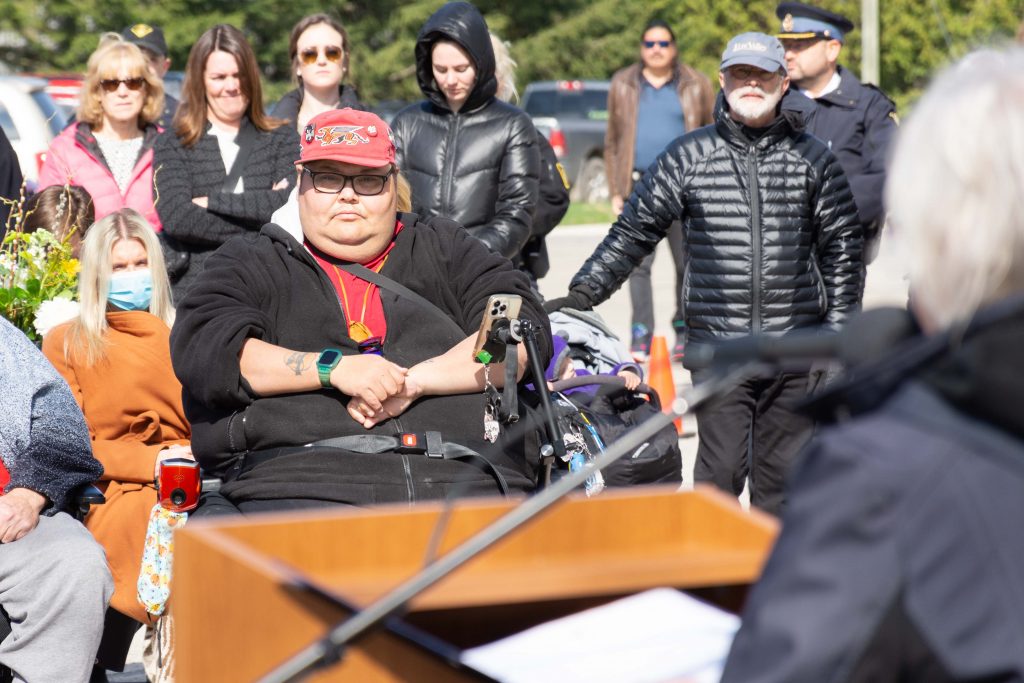
Mike Ashkewe, who also goes by his Indigenous name Heart of the River Clan Bear (wearing red hat), is a Guelph resident and Sixties Scoop survivor.
As a survivor of the Sixties Scoop — when the Canadian government allowed for Indigenous children to be taken from their families, without consent, and adopted out to white families who often suppressed their natural identity — Ashkewe hopes the power of cooperation, love, honour and courage will see the gathering circle last well beyond the next seven generations, a practice of looking forward to ensure protection of resources for future generations.
Water was finally offered to the newly planted white birches by other community members and those gathered, from youngest to eldest, including seniors from the nearby Wellington Terrace Long-Term Care Home, as an intentional act of inclusivity.
Brunelle said “Miigwetch” and “Maarsii” (“thank you” in Ojibwa and Michif, respectively) to the children who were present, and hoped the garden would be a small step to creating a better planet for them.
Holmes asked people to think about responsibility and ways to give back to the land when using the gardens in the months ahead.
She suggested anyone reach out to the IAC to volunteer for planting, weeding, watering and eventually harvesting.
The opening of the gathering circle was a culmination of several months of background work by IAC members, including Brunelle, Holmes, and Tammy Bastien, Jennie Matthews and Melanie Elmquist.
The federal government covered 75 per cent of the total $312,500 project cost with a $250,000 grant, and the county covered the remaining $62,500 for supplies such as trees, gravel, soil, and limestone.
Centre Wellington District High School students from Geoff Patterson’s construction class are also helping out by building and contributing 18 white cedar boxes for planting.
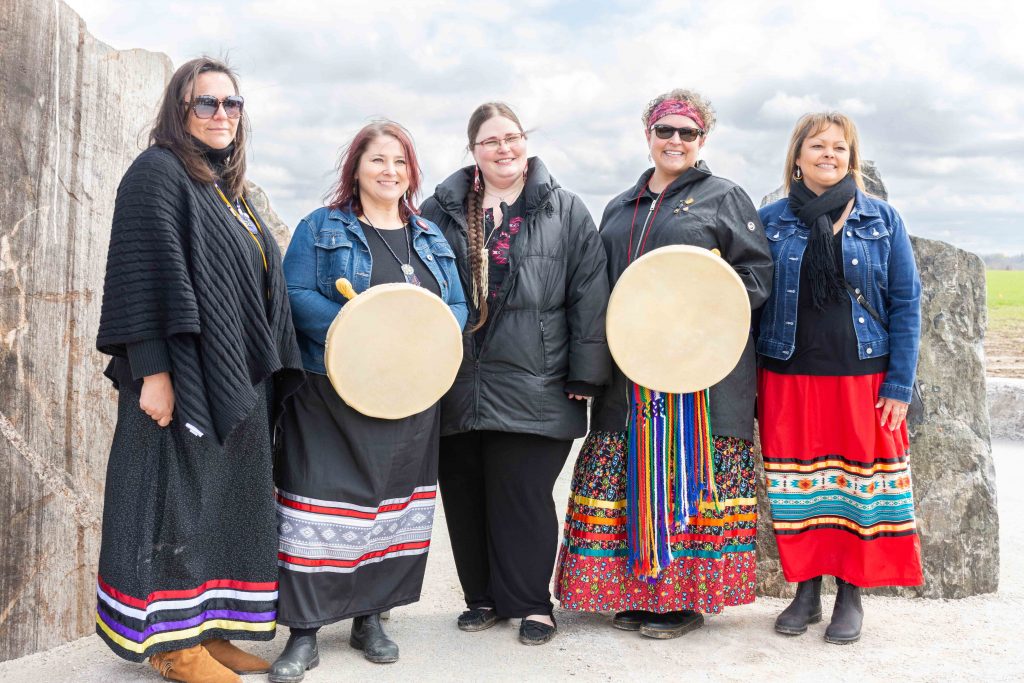
Wellington County Indigenous Advisory Committee members, from left: Tammy Bastien, Jennie Matthews, Amber Holmes, Colleen Brunelle, and Melanie Elmquist.
But the journey wasn’t without its share of internal strife.
“Engaging Indigenous communities can be a very hard road to travel,” Brunelle later told the Advertiser.
“Without finding compromise, nothing changes.
“We hope that building these relationships and [that] we earn their trust and demonstrate through our actions that we are invested in the success of this for everyone.”
Brunelle said the gathering circle gives her “so much hope” for working in culturally safe ways.
She also noted other Indigenous groups, such as Anishnabeg Outreach and Southwest Ontario Aboriginal Health Access Centre, have expressed interest in using the area.
“As my daughter and youth have reminded me, Indigenous space is not always about a feeling of sadness,” she said.
And though there is much sadness to feel, Brunelle added, “there are also many things that Nations have to be proud of, and we’re hoping to bring that balance to this garden moving forward.”
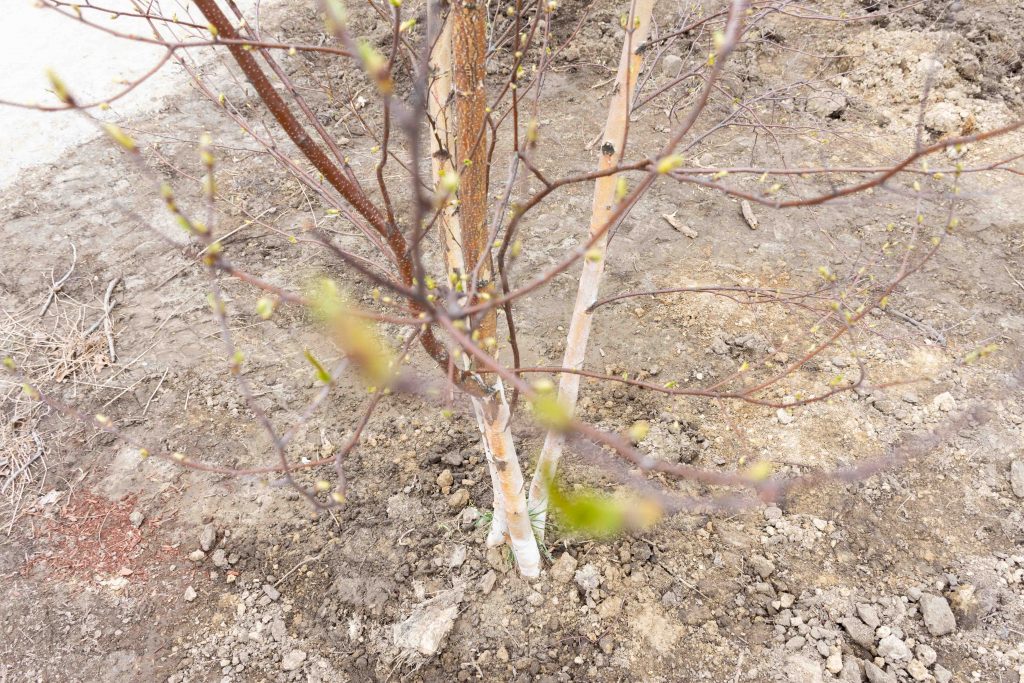
One of the five white birch trees planted within a new Indigenous Gathering Circle in Aboyne.
In the weeks and months ahead, Indigenous and non-Indigenous volunteers alike will help plant gardens.
And though Brunelle says the circle is for all to use — “the IAC will not gatekeep who uses this space” — the space can be used for private ceremony, and there are ideas to include Indigenous languages and QR codes for education.
“Your support and appreciation for the work done to get to this point is appreciated by us more than you may ever know,” Brunelle said on Wednesday, addressing the gathering.
Indigenous community members turned to face north, south, east and west as they closed the ceremony with the drumming and singing of the Travelling song, sending people on their way.
Elders and seniors exited the gathering circle first, followed by those who were younger and expected to assist, to partake in the eating and drinking of cedar tea, Three Sisters soup, frybread, Indian cookies and fruits and vegetables.
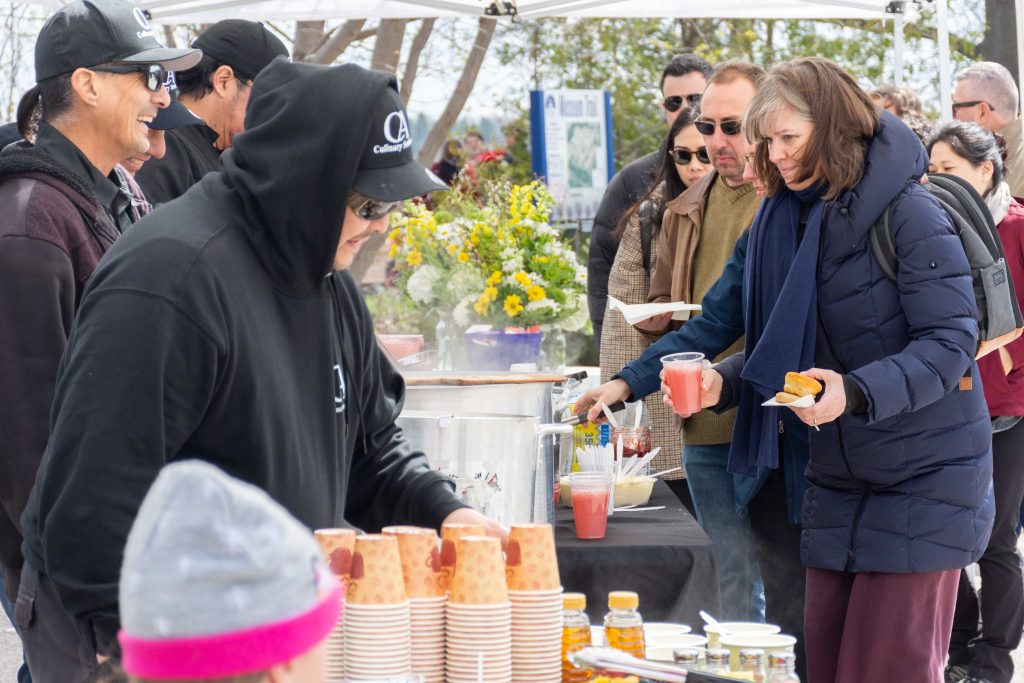
Cedar tea, Three Sisters soup, frybread, Indian cookies and fruits and vegetables were served.




